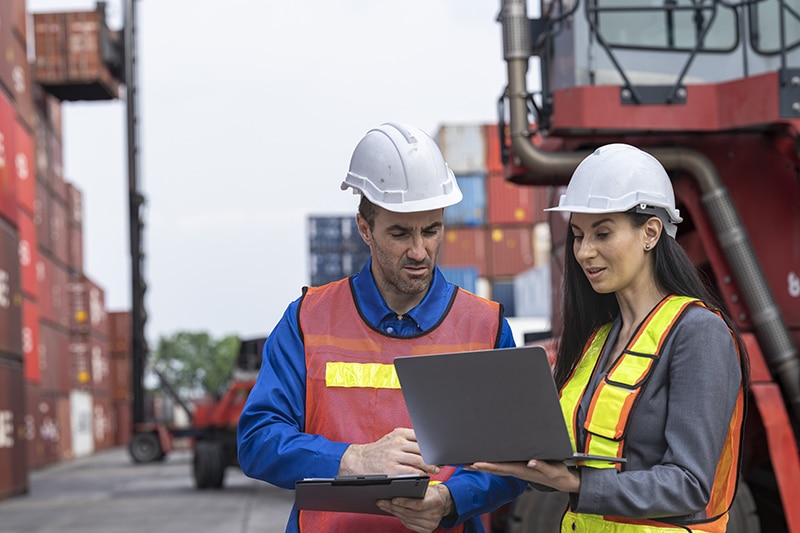Accurate and well-structured data is crucial for maintaining efficiency and maximizing profits. However, many companies struggle with outdated systems and unorganized data, leading to inefficiencies that can slow down operations. This accumulation of poor-quality data, often referred to as data debt, can significantly hinder a company’s ability to integrate new technologies and make informed decisions. By leveraging external solutions for data cleansing in logistics, businesses can enhance their operational efficiency, reduce costly errors, and pave the way for advanced digital transformation.
Understanding Data Debt in Logistics
Data debt refers to the accumulation of data-related issues such as duplicate records, incorrect entries, inconsistent formatting, and security vulnerabilities. Over time, as logistics companies expand their operations, they generate massive amounts of data across multiple systems, including transportation management, warehouse tracking, and communication channels. When data is not regularly reviewed and optimized, businesses end up dealing with dark data in logistics—unused, outdated, or unclassified data that remains hidden in various digital platforms.
For freight forwarders and air cargo operators, dark data could be lingering in systems related to shipment tracking, inventory management, and customer communication. This creates major roadblocks in adopting automation, artificial intelligence, and predictive analytics—technologies that are essential for modern logistics operations.
The Impact of Inaccurate Data on Logistics Performance and Profitability
When logistics companies operate with unreliable data, it leads to delays, errors, and operational inefficiencies. Poor data quality can result in incorrect shipment details, misrouted cargo, and regulatory compliance failures. These inefficiencies not only increase costs but also result in missed revenue opportunities. For instance, any mistake in inventory data accuracy could mean losing a potential sale due to stock shortages, even when items are actually available but not updated in the system. Similarly, without a clear understanding of market trends and customer demand, logistics companies may fail to seize new business opportunities, expand into profitable regions, or upsell additional services.
To stay competitive and maximize revenue, logistics businesses must eliminate data debt and optimize their data management practices.
How to Cleanse Data for Smoother Operations
Addressing data debt requires a strategic and well-structured approach to data cleansing. Here’s how logistics companies can ensure that their data is accurate, complete, and reliable.
- Assess Your Current Data Landscape
Before implementing any data cleansing strategies, logistics companies must first analyze their existing data environment. This includes: - Identifying all data sources, such as transportation management systems, warehouse databases, and shipment tracking tools.
- Reviewing the formats, structures, and storage locations of the data.
- Determining which data sets are outdated, duplicate, or inaccurate.
Understanding the current state of data allows businesses to pinpoint the root causes of inefficiencies and develop a plan to improve data quality.
- Identify and Eliminate Dark Data
Dark data, or hidden, unused information, can be a significant problem for logistics companies. It often exists in unstructured formats, such as handwritten notes, employee emails, or unlogged system errors. To uncover dark data sources: - Conduct surveys and interviews with frontline employees to identify undocumented work processes.
- Analyze system logs, support tickets, and error reports to detect inconsistencies.
- Utilize IoT devices and sensors to collect data from physical operations that may not be currently recorded.
By bringing dark data to light, logistics companies can improve transparency and ensure all valuable information is properly recorded and utilized.
- Implement Data Cleansing Techniques
Once dark data is identified, businesses must take steps to cleanse and standardize their records. Effective data cleansing involves: - Removing duplicate, inaccurate, or incomplete records.
- Establishing validation rules to ensure that all incoming data meets quality standards.
- Implementing data archiving strategies to separate active, relevant data from outdated information.
These measures ensure that logistics companies can make accurate, data-driven decisions without being bogged down by irrelevant or faulty information.
- Establish Strong Data Governance Policies
Maintaining high-quality data requires ongoing efforts. Develop strong data governance policies for logistics companies to ensure long-term accuracy and security. These policies should include: - Assigning data stewards responsible for managing data integrity and enforcing policies.
- Implementing security protocols, such as access controls and encryption, to protect sensitive information.
- Regularly auditing data to monitor its accuracy and consistency.
By enforcing data governance, logistics companies can prevent future data debt and create a sustainable data management framework.
Exploring Next-Generation Logistics Management
With clean and well-organized data, logistics businesses can unlock the full potential of emerging technologies. AI-powered analytics, automation, and predictive modeling become more effective when built on high-quality data. By addressing data debt and integrating a data-driven logistics strategy, logistics companies can improve efficiency, reduce costs, and enhance customer satisfaction. It is also important to understand common data cleansing mistakes to avoid them.
Data should be an asset, not a liability. If your logistics operations are struggling due to inaccurate or outdated information, investing in professional logistics data cleanup solutions can help streamline your processes, optimize decision-making, and pave the way for future growth.





